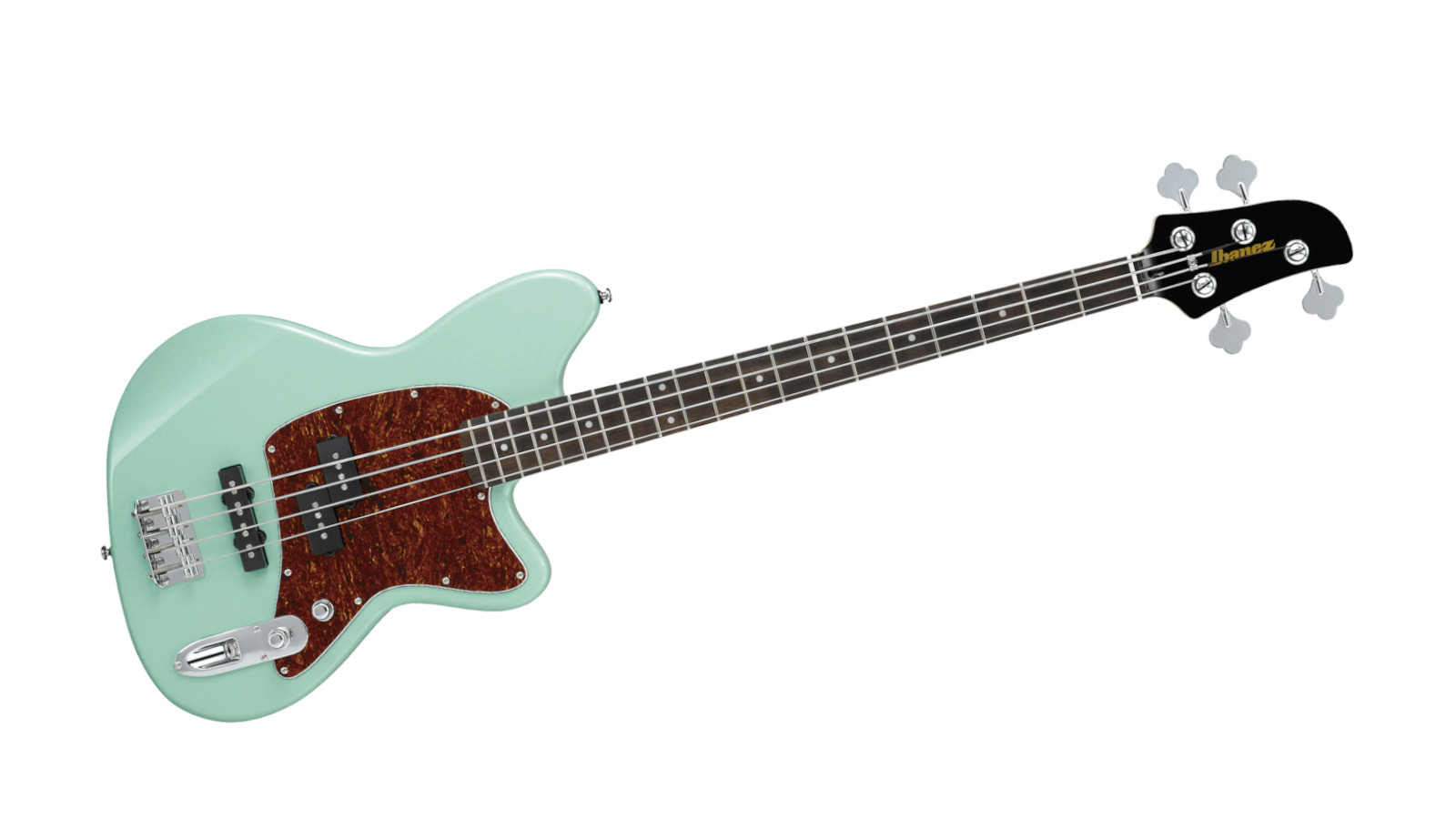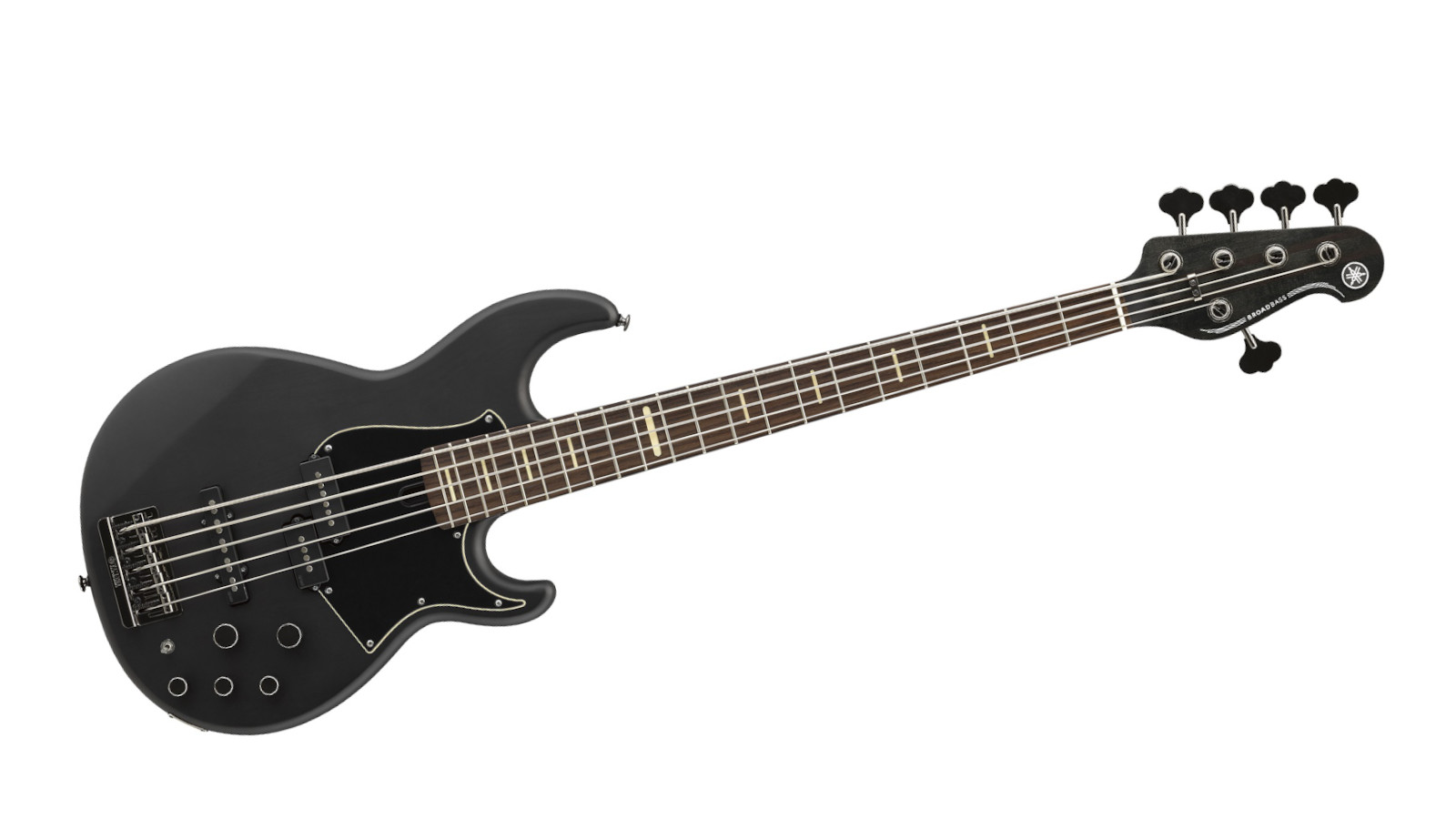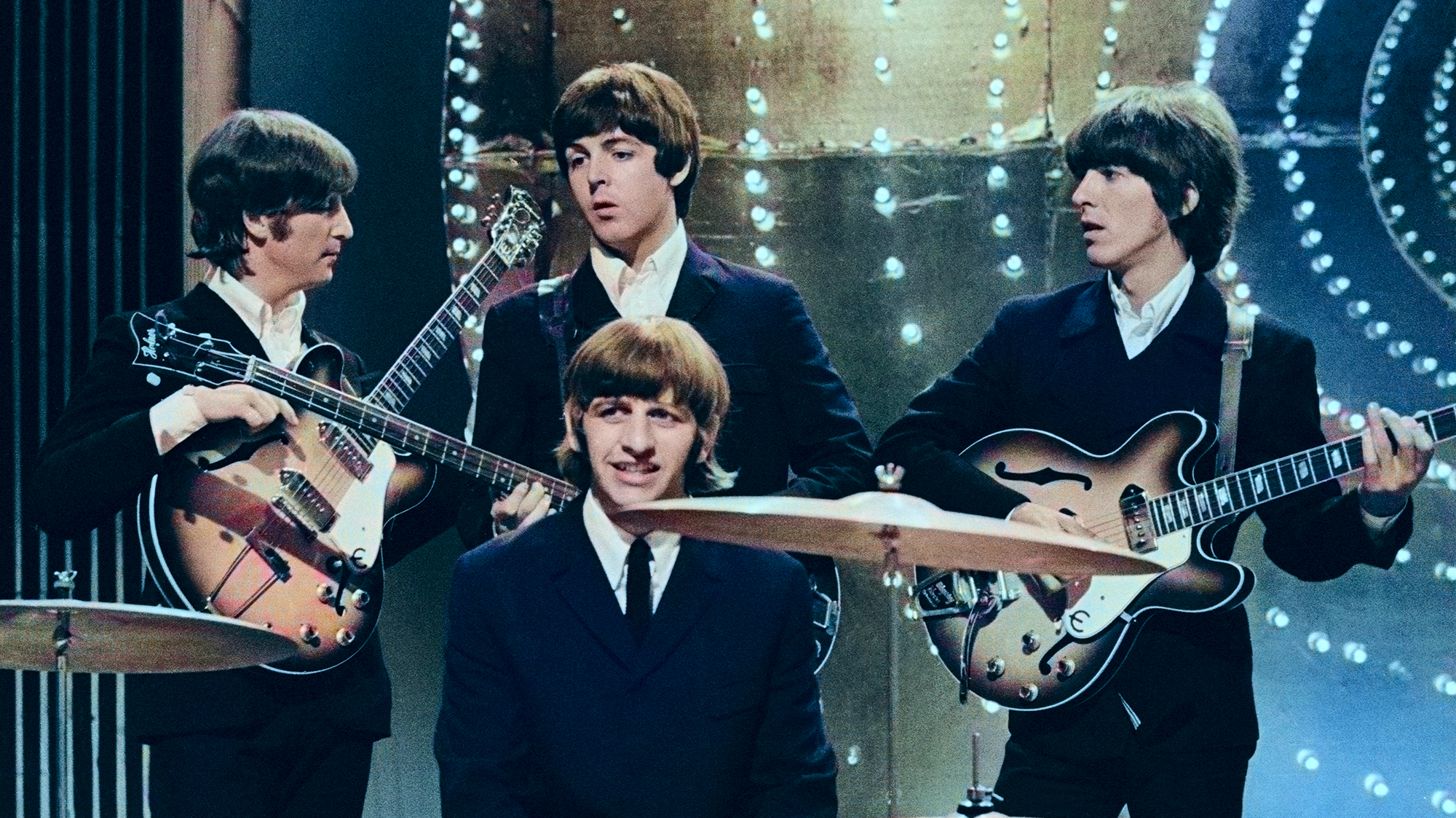Best bass guitars 2025: Four- and five-string options for every style and budget
From top-end Rickenbackers to budget-friendly squiers, the best basses take many forms – these are the ones to consider right now

Whether you’re shopping for your first bass or you’re upgrading an existing one, there’s never been a better time to invest in one of the best bass guitars. With amazing four- and five-string options for all budgets, you’re sure to find the right one for you in this guide.
A good bass tone is crucial for a band to sound good, whether live or on record. Luckily, all of our picks in this guide feature superb pickups and decent build quality to ensure that your new instrument delivers fantastic sounds, will perform night after night and feel great to play.
We’ve picked a selection of what we believe to be the best bass guitars available right now, taking into consideration a range of playing styles and budgets. From metal-ready five-strings, to tried-and-tested classics, you can consider all bases covered here.
Guitar Player’s Choice
The original and still one of the best, the Fender Vintera 50s Precision Bass delivers the world’s most popular bass guitar sound. Full, fat, and punchy, there’s nothing quite like the Precision Bass sound, and this Vintera version carries stunning good looks to match its great tone.
Offering an affordable take on a modern classic, the Sterling by Music Man StingRay4 is one of the best value-for-money bass guitars available today. Its high output humbucking pickup combined with exceptional build quality lets this bass guitar punch well above its weight.
Best overall

1. Fender Vintera II 50s Precision bass
Our expert review:
Specifications
Reasons to buy
Reasons to avoid
The P-Bass was the first ever commercially successful bass guitar. Debuting in 1951, it says something about their versatility and brilliant sound that they’re still in huge demand today. This Fender Vintera II 50s Precision Bass aims to capture the vibe of the original with modern build quality and components.
The sound of this P-Bass is exactly what you’d expect. Deep, warm, with a strong midrange presence that lets it cut through any mix beautifully. It’s a simple pickup configuration with one volume and tone control, yet the tone knob is surprisingly wide-ranging.
The subtle touches on this bass complement the retro looks, like the anodized scratchplate and finger rest, all helping the vintage vibe. Rock solid Fender hardware delivers stability and durability. It’s a simple instrument, but one that’s deceptively versatile.
Best on a budget

2. Sterling By Music Man SUB Ray 4
Our expert review:
Specifications
Reasons to buy
Reasons to avoid
Favored by everyone from Bernard Edwards of Chic to Tim Commerford of Rage, the full-fat Music Man StingRay bass is financially out of reach for most bassists. So, it’s a pleasant surprise to find the Sterling by Music Man StingRay4 get so close to the look and sound of its much more expensive sibling.
That sound is driving with plenty of energy and clarity in equal measure. The active electronics deliver excellent output that melds well with a lot of styles, and you’ve got lots of tone sculpting options with the onboard EQ.
Deep cutaways on the body give you great upper fret access and it's quite lightweight for a bass guitar, so you won’t be cursing during those long rehearsals. The neck is lovely and smooth to play on too, it’ll make you want to keep coming back again and again. At this price point, you’ll be hard pushed to find something better.
Best for rock

3. Epiphone Thunderbird 60s Bass
Our expert review:
Specifications
Reasons to buy
Reasons to avoid
Look no further than the Epiphone Thunderbird 60s Bass if you want to turn some heads at your next show. As well as its absolutely gobsmacking good looks, it’s also got a raunchy tone that’s perfect for rock and metal.
Dual ProBucker #760 humbuckers deliver a fat-sounding growl that sustains for days. You can blend the volumes of each pickup together, so whether you need a warm, round sound or a more cutting treble tone there’s plenty in reach here.
It’s a neck-through design so you get great upper fret access and the rounded 60s profile feels really fat in your hand, yet it’s surprisingly comfortable to play. The rock solid hardware is durable enough to put up with plenty of abuse on the road, and with these looks you definitely won’t want to keep it at home.
Best 5-string

4. Ibanez SRMS805
Our expert review:
Specifications
Reasons to buy
Reasons to avoid
Bass guitars have been the same design for well over half a century but that’s all changed in the past few years. The Ibanez SRMS805 features a multi-scale neck, designed to provide a comfortable playing platform for the modern bassist.
A pair of Bartolini BH2 pickups are angled to enhance the clarity, particularly useful when you have a low B string in the mix. They sound amiable in passive mode, but once you engage in active mode there’s some serious heft and grunt available.
The multi-scale neck design means that you keep the scale length long for the lower strings, ensuring a low action, whilst the higher strings are snappy thanks to the shorter scale length on that side. It’s a marvel of modern bass guitar design, and it plays incredibly well.
Best for beginners

5. Yamaha TRBX 305
Our expert review:
Specifications
Reasons to buy
Reasons to avoid
Yamaha seemingly makes every instrument under the sun, but they’re particularly famous for their bass guitars. The Yamaha TRBX 305 is a budget five-string bass guitar that’s great as a backup for a seasoned musician, or for the beginner looking to get their foot on the five-string ladder.
The tone offered by this bass is super-clean and clear with plenty of projection. The onboard EQ features five presets that cover slap, pick, flat, fingerstyle, and solo. This is a great addition for beginners and veterans alike, offering instant tone recall for various styles.
The neck is a shallow ‘D’ profile, super playable and there’s a slightly shorter scale length than you’d expect on a five-string. It’s an inch shorter which makes it perfect for beginner players or those with smaller dimensions.
Best budget jazz bass

6. Squier Classic Vibe 60s Jazz Bass
Our expert review:
Specifications
Reasons to buy
Reasons to avoid
The Squier Classic Vibe 60s Jazz Bass offers unbelievable playability at an amazing price. Part of the Classic Vibe range from Squier, this series has delivered some outstanding instruments, including this great Jazz Bass.
A favorite of John Paul Jones and Geddy Lee, the Jazz Bass delivers a bright and trebly tone with a generous helping of mid-range roar. It makes your basslines sound rich and responsive and the two pickups offer a great variety of sounds for you to choose from thanks to individual volume controls.
The slim width of the neck is what makes this bass so unbelievably playable, really freeing up your hands to explore the fretboard with aplomb. Overall this bass guitar feels like it’s worth twice the asking price, and well worth a go for any self-respecting bassist.
Best P-bass alternative

7. G&L Tribute L-2000
Our expert review:
Specifications
Reasons to buy
Reasons to avoid
In 1965 Leo Fender was forced to leave his world-famous company due to illness. Once he was cured he didn’t hang around in getting back to business though. The G&L Tribute L-2000 pays homage to one of his more famous creations post-Fender, the L-2000 bass guitar.
Not one for living off former glories, the L-2000 features a much higher output tone, very different from the famous J- and P-Bass sounds. It’s girthy yet precise, and when combined with the TriTone preamp you get a huge array of sounds with series and parallel options alongside a two-band EQ.
A medium ‘C’ profile feels nice and hefty in your hand, making light work of a variety of playing styles. The Leo-designed Saddle Lock bridge allows you to lock the bridge saddles together, eliminating side-to-side movement to help focus the overall sound and improve intonation and action.
Best for no frills

8. Ibanez Talman TMB100
Our expert review:
Specifications
Reasons to buy
Reasons to avoid
The Ibanez Talman TMB100 is a simple bass guitar with a huge roar. Its incredibly powerful pickups deliver an output much higher than you’d expect, coupled with some clever controls for tonal tweaking.
The Talman is incredibly loud, with a versatile mixture of a split-coil in the middle position and a J-Bass type pickup in the bridge. This classic combo combines beautifully with the stacked controls where one controls volume and balance between the pickups, whilst the other does your EQ sculpting with bass and treble.
The neck is fairly chunky yet comfortable, matching the overall hefty feel of this bass guitar. The body contours enhance the coziness when sitting and, despite a little neck dive when standing, it’s a great bass to riff on in those long rehearsal or recording sessions.
Best for gigging

9. Yamaha BB735A
Our expert review:
Specifications
Reasons to buy
Reasons to avoid
The Yamaha BB735 offers the professional quality and reliability required to take a bass out on the road. With some unique build features and great electronics, this is a versatile bass guitar that will serve you well in almost any scenario.
The pickup configuration is supremely adaptable, delivering a tone that is full-bodied and smooth. The 3-band EQ lets you dial in plenty of different bass sounds from vintage to modern, responding well to small tweaks to help you easily cut through any mix on stage.
The build quality is simply outstanding, as you’d expect from any Yamaha instrument. The neck features six bolts, with two countersunk and angled at 45 degrees to help enhance the stability. This gives you a super stable platform that you can rely on to put up with the most aggressive playing.
Best for pros

10. Rickenbacker 4003S
Our expert review:
Specifications
Reasons to buy
Reasons to avoid
The Ricky bass is one of the most iconic instruments ever made. Used by everyone from Lemmy to McCartney, these things are powerful, distinct but also surprisingly versatile.
There being two pickups, and a volume and tone knob for each, you can easily craft a plethora of tones. From mellow, warm and wooly to bright and rumbly, it’s all there. The Rickenbacker 4003S can really cut through a mix too, so if you need to be heard in a live or studio mix, then you’re well equipped to do so. The build quality, sound and feel is worthy of the price tag that the bass wears – it’s a pro instrument in all senses.
It’s obviously an incredibly striking instrument aesthetically too; from the horseshoe pickup cover to the double cutaway body shape. They’re not the smallest basses out there, which might be something to consider, but they’re definitely one of the most unique!
Best short-scale

11. Hofner Ignition SE Violin Bass
Our expert review:
Specifications
Reasons to buy
Reasons to avoid
The Hofner Ignition SE Violin Bass offers players a bass guitar icon without the auction-house price point. It’s a distinctive instrument, from the head-turning looks all the way to the thumpy tone.
The unusual control panel takes some deciphering, but once you’ve got a hold of it, it offers a wealth of usable sounds. Switch to Rhythm and you get plenty of low end with that trademark violin bass thump. Flick to solo and the sound is more mid-range heavy, with a lovely growl to it.
It’s very lightweight thanks to the hollow body, which makes it really comfortable for long playing sessions. The short scale also helps with the playability, making the fretboard feel far more comfortable for guitarists making the switch or those with smaller dimensions.
FAQs

What should I look for in a bass guitar?
Choosing the best bass guitar will rely on several important factors. From how it sounds to how it plays, you’ll need to know the ins and outs of the instrument you're choosing. As always we highly recommend playing a few if it’s your first, but appreciate this isn’t always possible. No matter which you go for, all of the choices in this guide will offer a great experience for both beginner and veteran players.
What's the difference between active and passive pickups
Something you’ll often come across when dealing with bass guitars are active versus passive electronics. Passive electronics work via the voltage supplied by your pickups. You plug in and you’re ready to go. Active electronics typically have a preamp built into the guitar, which requires its own additional power supply.
So which is better? Well, that just depends on what it is you’re looking for. Vintage basses had passive electronics, delivering a sound with less output but arguably a warmer tone. Active electronics are often described as sterile, and this is partly because of the higher output, but also because of the tone shaping options that are usually available directly on the guitar itself. If you were to break it down into two sounds you’d argue that passive electronics offer a vintage sound, whereas active electronics are more modern. You will, however, find many bass guitars with active electronics that have a bypass switch, so you can get both on one instrument!
Do I need four strings or more?
Bass guitars are available in four, five, and even six-string options but you’re far more likely to come across the four and five-string variants. The five-string bass offers an extra low string, allowing you to deliver even lower tones than a regular bass guitar. This versatility is great for players who want to be more exploratory or those who play heavier styles where their guitarists might be down-tuning. It’s certainly worth considering the added value of the extra string, as well as the extra weight! Five-string bass guitars require more wood for the neck and body, so you can expect them to be much weightier than their four-string cousins, which is something to bear in mind. We’d certainly recommend that a beginner sticks to four strings until they get their bearings with the instrument and are ready to move on to something more complex.
What do I need to know about scale length?
You will also come across scale length when researching your next bass. Scale length is the distance between the nut and bridge, an important factor in the way the instrument plays. The thicker the string, the longer the scale length will need to be to accommodate the extra girth, so you’ll often find five-string bass guitars have a longer scale than their four-string counterparts. You will also come across the short-scale bass guitar from time to time. Favored for their great recording tone and easy playability, a short-scale bass guitar is a great option for new players or those with smaller dimensions. The shorter scale length makes these guitars very punchy sounding, hence their popularity in the recording studio.
Read more about how we test products at Guitar Player.
Related buyer's guides
You can trust Guitar Player.
- Match your new guitar with one of the best bass amps
- On a budget? Here's our list of the best bass guitars under $500
- Plug in with one of the best guitar cables
Get The Pick Newsletter
All the latest guitar news, interviews, lessons, reviews, deals and more, direct to your inbox!

Matt is a Junior Deals Writer here at Guitar Player. He regularly tests and reviews music gear with a focus on guitars, amps, pedals, modelers, and pretty much anything else guitar-related. Matt worked in music retail for 5 years at Dawsons Music and Northwest Guitars and has written for many music sites including MusicRadar, Guitar World, Guitar.com, Ultimate Guitar, and Thomann’s t.blog. A regularly gigging guitarist with over 20 years of experience playing live, writing, and recording in bands, he's performed everything from jazz to djent, gigging all over the UK in more dingy venues than you can shake a drop-tuned guitar at.
Guitar Center's Guitar-A-Thon is back, and it includes a colossal $600 off a Gibson Les Paul, $180 off a Fender Strat, and a slew of new exclusive models
"We tried every guitar for weeks, and nothing would fit. And then, one day, we pulled this out." Mike Campbell on his "Red Dog" Telecaster, the guitar behind Tom Petty & the Heartbreakers' "Refugee" and the focus of two new Fender tribute models










